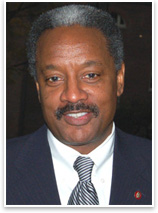
| DIVERSITY The Mighty Forces and Resources of One AIA
Now, 151 years later, the stakes have been raised. Thanks to the information revolution, it’s clear our house is not detached. We’re an integral part of a larger global neighborhood in which there are no gated communities! We have no choice but to engage our neighbors, sometimes as leaders, more often as partners in advocating those issues where, by our training and experience, we have standing. Many of the most critical issues facing our global neighborhood—affordable housing, quality health care, health itself, security, transportation, and climate change, to name the most obvious—are in some way or other design issues. Indeed, never before in the history of the planet has the collective training and creative gifts of our profession been needed more. Can there be any doubt that to ride the crest of the energy unleashed by change, it’s all hands on deck and each one pulling at the oars? Can there be any doubt that to ride the crest of the energy unleashed by change, it’s all hands on deck and each one pulling at the oars? It would be un-American to do otherwise. Wise investment of Institute resources I want to make clear I’m not talking about uniformity. My focus is the unity that comes from collaboration and cooperation in pursuit of a common purpose. The point may be illustrated by something I believe this audience is familiar with. It’s called the “Aspen Effect.” The aspen is the only species of tree in which all of the roots are an interconnected mass that provides the structural network and support for the individual trees. This is my vision of “One AIA”—a community that supports the aspirations of its individual members. With the publication two years ago of a Strategic Plan for the national component, we have articulated a way to:
Sustainability: an ethic of enlightened stewardship
If you are a regular reader of AIArchitect, you are aware of your Institute’s efforts addressing stewardship of the environment. (If you’d like more on that, visit the new Walk the Walk page on AIA.org.) That’s the power of One AIA.
Our response is integrated project delivery, which is why the AIA is creating the tools, resources, and advocacy campaigns, and developing relationships that provide AIA members with best-practice information regarding integrated project delivery and collaborative delivery tools. With the publication of the updated contract documents last fall, the AIA and AIA California Council jointly published a Guide to Integrated Project Delivery. If you haven’t looked at it yet, I urge you to do so. It provides essential information and resources to practitioners, owners, attorneys, and contractors interested in transitioning from traditional methods of project delivery to an integrated project approach. The fruitful partnership between the national component and a state component is yet another demonstration of the mighty force and resources of One AIA. The importance of diversity to One AIA When looking at the many stakeholders who compose the AIA—not only the nearly 300 state and local components, but also the knowledge communities, the associates and licensed professionals, and those who teach—it may be tempting to throw up our hands and say our professional community is diffuse. The center cannot hold. The power inherent in the vision of “One AIA” is impossible to obtain. I rejoice in that diversity; in fact, I believe we are challenged to be even more diverse so that we, the professional community for America’s architects, have all the resources we need to respond to the challenge of change. Here are three examples: The ways in which those trained as architects are applying their training in the new economy are expanding. This is great news. However, we need to be more aggressive in making the AIA their home. Currently, there is a group of architects out there who make use of the resources developed by our members, yet have not chosen the AIA as their professional home. We need to be more creative in finding ways to bring them in so that the voice of the profession has greater clout at the local, state, and national level. We need to honestly identify the impediments, often unintentional, that have the effect of placing insurmountable roadblocks in the way of talented women and people of color who should find their home in the AIA A third challenge is to grow an AIA that truly reflects the face of the society we seek to serve. We need to honestly identify the impediments, often unintentional, that have the effect of placing insurmountable roadblocks in the way of talented women and people of color who should find their home in the AIA. In the face of a world crying out for the talent and training of architects, we, as a professional community, must have access to every bit of talent that is out there or potentially available. To increase the value of the profession and the value of membership in the AIA, we welcome into the family the vast untapped resources of creativity and experience. In April, the AIA will host a summit on diversity. Its agenda will be to tackle the serious issues that still seem to be holding back our profession. Out of that conference will come an action plan with specific recommendations for action that will take us to a better place. Pursuing as one such an ambitious, nuanced approach to sustainability—the environment, the job site, and the profession—is an appropriately lofty goal for our profession. It won’t be easy. It would be impossible, however, without the collective will, commitment, and creativity of our entire professional community working together and with others under the banner of One AIA. |
||
Copyright 2008 The American Institute of Architects. All rights reserved. Home Page |
||
news headlines
practice
business
design
recent related
› Every Voice Is a Part of the Song (Flash video)
› 25 Steps to Diversity
This article is derived from remarks President Purnell delivered to AIA Las Vegas January 30, 2008.
AIA Public Policy Statement
Leadership in design and construction requires collaboration. Architects must encourage and celebrate the contributions of those who bring diverse experiences, views, and needs into the design process.
AIA Position Statement on Diversity
The AIA believes that diversity is a cultural ethos—a way of thinking or acting that fosters inclusion, enhancing our membership, our profession, and the quality of life in our communities. Embracing this culture of diversity, all programs and initiatives of the AIA and its members shall reflect the society that we serve, regardless of race, gender, sexual orientation, physical abilities, or religious beliefs.

 Summary:
Summary: Point two is sustainability as it applies to an ethic of collaboration and teamwork within our industry. Driven by the pressures of a global marketplace and an unforgiving economy in which any misstep can lead to ruin, the mantra of today’s client is faster, cheaper … faster, cheaper. Yes, clients have learned that in such a market, design can give them a competitive edge. But good design alone doesn’t answer the client’s business model of faster/cheaper.
Point two is sustainability as it applies to an ethic of collaboration and teamwork within our industry. Driven by the pressures of a global marketplace and an unforgiving economy in which any misstep can lead to ruin, the mantra of today’s client is faster, cheaper … faster, cheaper. Yes, clients have learned that in such a market, design can give them a competitive edge. But good design alone doesn’t answer the client’s business model of faster/cheaper.